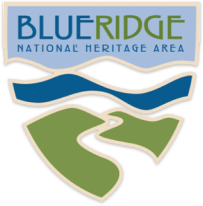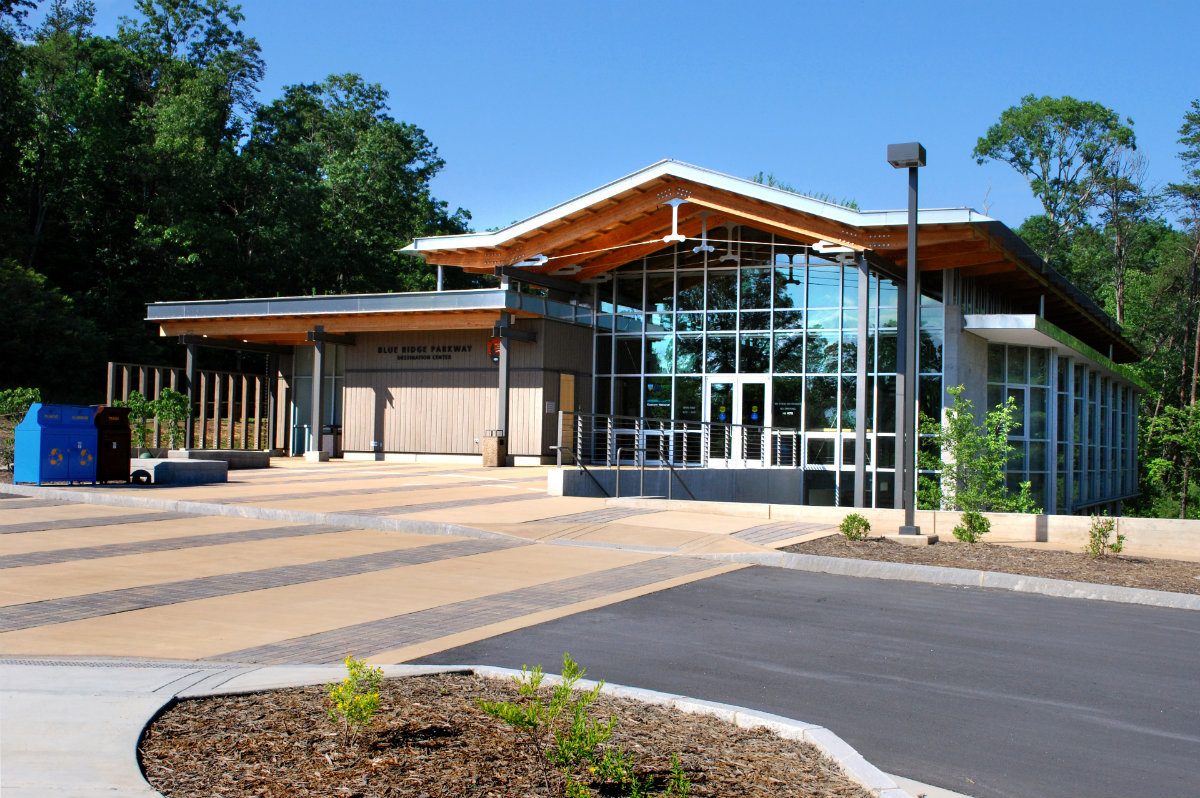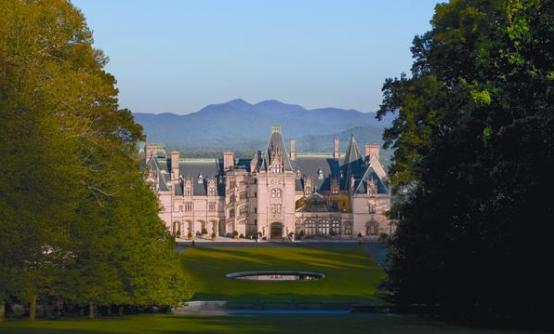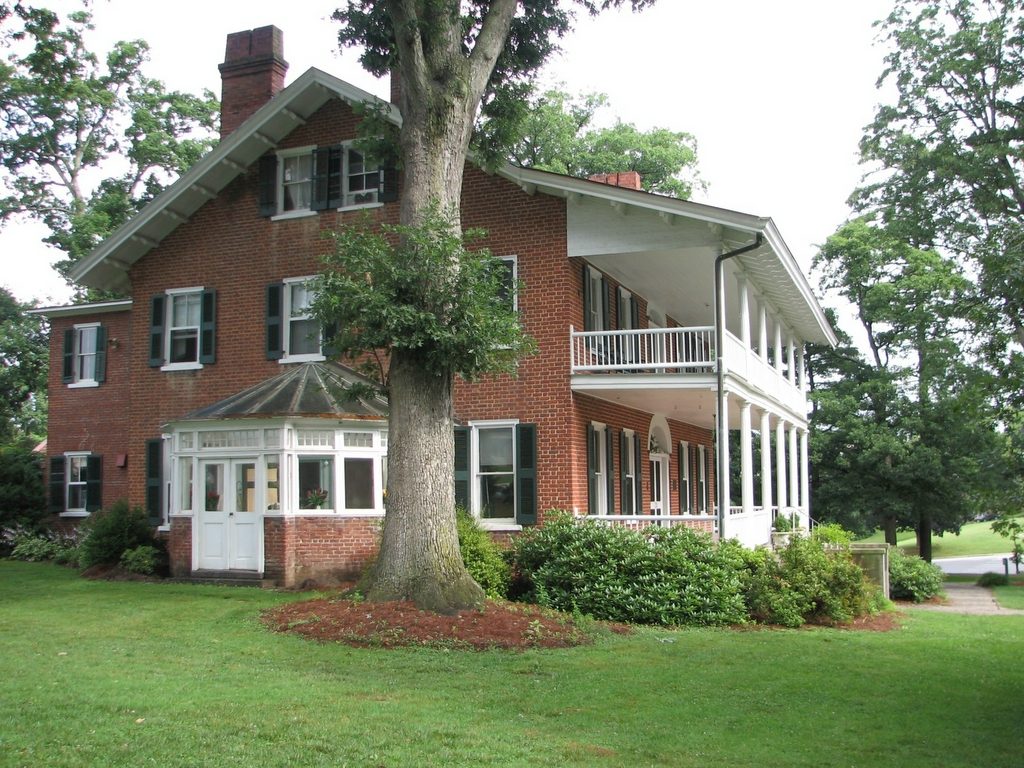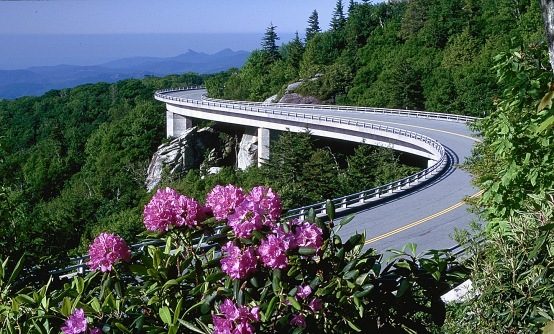
The Blue Ridge Parkway is America’s most visited National Park unit and is known as “America’s favorite drive.” Its 469 miles connect the Great Smoky Mountains National Park in North Carolina to the Shenandoah National Park in Virginia. Along the way, the Blue Ridge Parkway offers stunning views of the Blue Ridge mountains, forests, and pastoral landscapes, with abundant hiking trails, picnic areas, campgrounds, and interpretive signage.
The lead designer of the famous roadway, Stanley Abbott, was a landscape architect, not an engineer. Influenced by Frederick Law Olmsted, designer of New York’s Central Park and the grounds of Biltmore Estate, Abbott dreamed of creating a park-like environment as well as a road. Today, the completed Blue Ridge Parkway is a remarkable testament to his vision and is enjoyed by millions of visitors each year. It is certainly the most famous of all North Carolina’s scenic drives.
Authorized as a public works project during Franklin D. Roosevelt’s “New Deal,” the Blue Ridge Parkway was built by primarily by private contractors and the Works Progress Administration.
Planners saw long-term benefits for the project as well, recognizing that tourism would strengthen the economy of communities surrounding the Parkway.
More than just a Scenic Drive in the Blue Ridge Mountains
Check out the Blue Ridge Parkway “Spring Milepost” Travel Planner for more information on the Blue Ridge Mountains and its Musicial Traditions.
Click here, to see photographs along the Blue Rige Parkway and get a taste of what’s in store!
Two hundred fifty-two miles of the Blue Ridge Parkway wind from the town of Cherokee, NC to the Virginia border. Some of the main Parkway attractions include:
Hiking and scenic walks. With over 100 hiking trails, the Parkway offers everything from a short leg-stretch to a challenging cross-country trek. Some popular trails are:
- Cumberland Knob, milepost 217.5.
- Linville Gorge and Falls, milepost 316.3.
- Crabtree Falls, milepost 339.5 – 340.3.
- Mount Mitchell State Park, milepost 355.4.
- Craggy Gardens, milepost 364.4.
- Mt. Pisgah, milepost 408.6.
- Looking Glass Rock, milepost 417.
- Graveyard Fields, milepost 418.8.
- Devil’s Courthouse, milepost 422.4.
- Mount Hardy, milepost 422.8.
- Richland Balsam, milepost 431.
Camping. Parkway campgrounds are often not crowded and, at higher elevations, can be delightfully cool in the summertime. They include:
- Julian Price Memorial Park, milepost 295.
- Crabtree Meadows and Falls, milepost 339.5 – 340.3.
- Mt. Pisgah, milepost 408.6.
Historic and interpretive sites. A number of historic homes, Revolutionary War sites, and interpreted natural and cultural sites can enrich the traveler’s journey. Among them are:
- Brinegar Cabin, milepost 238.5.
- Ben Long Frescoes at Glendale Springs, milepost 258-259.
- Cradle of Forestry, 4 miles from milepost 411on US 276 South
- Moses H. Cone Memorial Park and Parkway Craft Center, milepost 294.
- Museum of North Carolina Minerals, milepost 331.
- Overmountain Victory National Historic Trail, milepost 331.
- Mount Mitchell State Park, milepost 355.4.
- Folk Art Center, milepost 382.
- Blue Ridge Parkway Visitor Center, milepost 384.
Restaurants and visitor services:
- Linn Cove Viaduct Information Center, milepost 304.4.
- Craggy Gardens Visitor Center, milepost 364.4.
- Pisgah Inn and Restaurant, milepost 408.6.
- Waterrock Knob Visitor Information Center, milepost 451.2.
The National Park Service offers ranger-led activities and evening campfire programs at various locations.
The town of Cherokee, NC at milepost 455.7, is the southern entrance to the Parkway and the North Carolina gateway to the Great Smoky Mountains National Park. The Qualla Boundary is the home of the Eastern Band of the Cherokee Indians.
The Blue Ridge Parkway is also a favorite ride for bicyclists and bikers. A good Blue Ridge Parkway Guide can also be found at http://www.romanticasheville.com/BlueRidgeParkway.htm.
The Parkway is open year-round, but sections may be closed in winter due to ice and snow. For real-time information on Blue Ridge Parkway closures click here. Year-round attractions located on the Parkway include the Museum of North Carolina Minerals near Spruce Pine and the Folk Art Center and Blue Ridge Parkway Visitor Center in Asheville. For information on road conditions, call (828) 298-0398.

